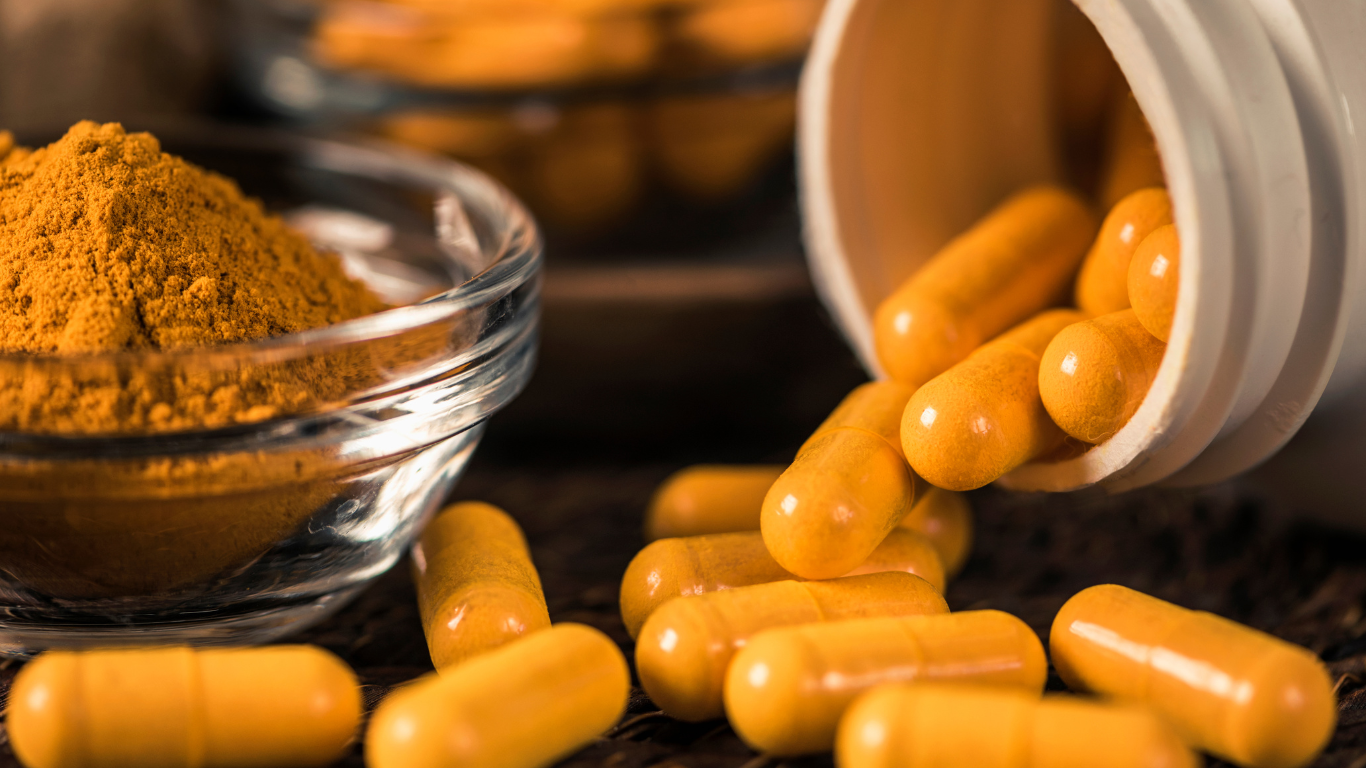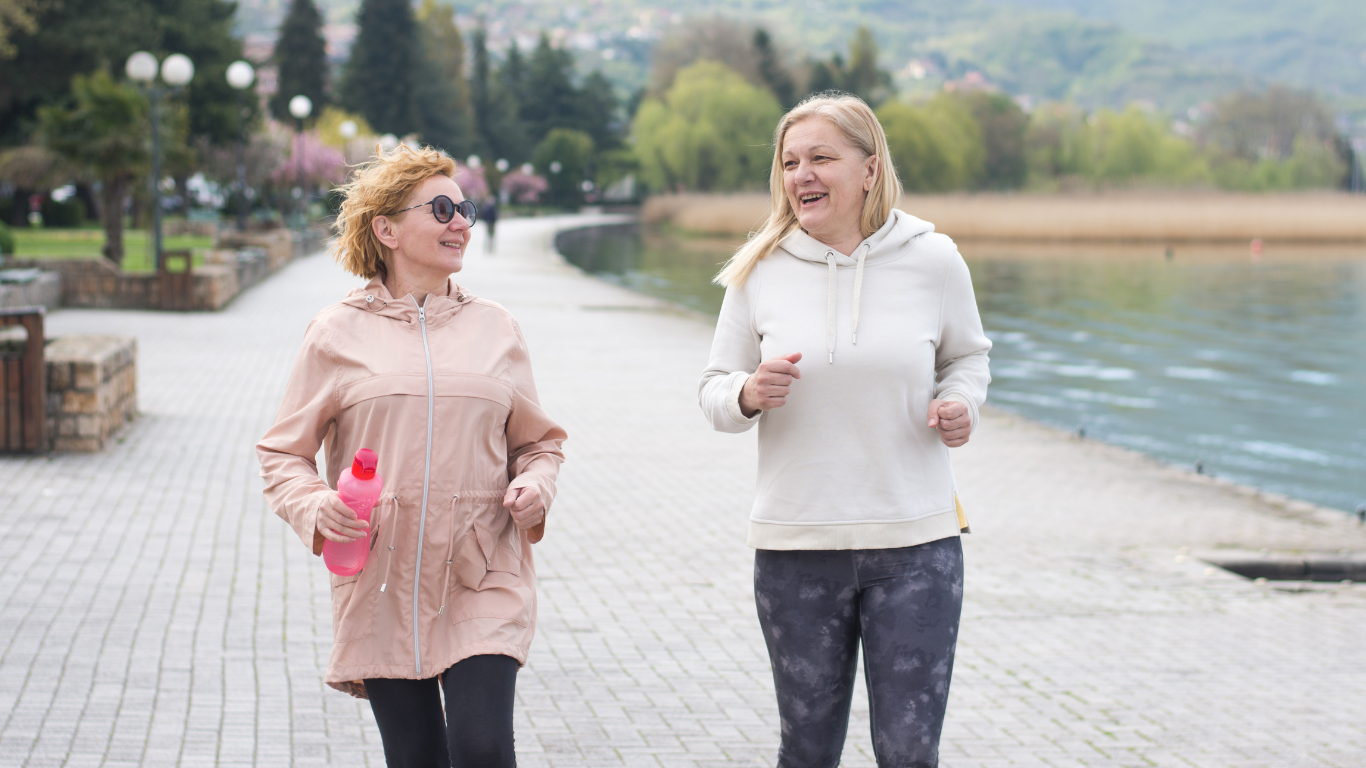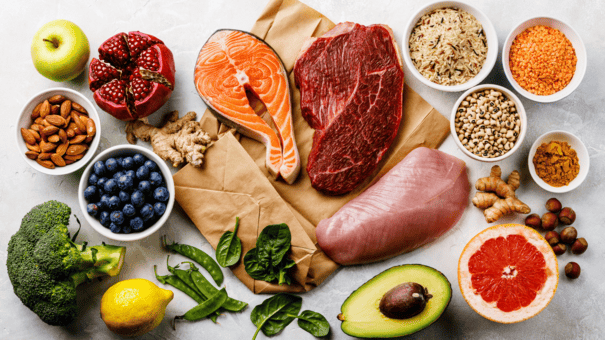Curcumin or Turmeric Root: Which Fights Inflammation Best?
Inflammation reveals itself through familiar sensations—joint stiffness, muscle soreness, localized warmth. Beneath these surface symptoms, molecular processes like NF-kB activation and COX-2 enzyme production drive cellular responses that influence long-term health outcomes.
Two natural substances frequently studied for their anti-inflammatory properties are turmeric and its primary active compound, curcumin. While derived from the same rhizome, the two are not identical in their effects or applications.
The choice between whole-plant preparation and isolated compounds depends on bioavailability requirements, symptom severity, and individual metabolic factors. The latest research indicates curcumin’s potency in acute inflammatory scenarios, while turmeric’s broader phytochemical profile may offer gentler support for chronic conditions .
This article explores how these golden compounds work differently to combat inflammation and which might be the better choice for your specific situation.
Key Takeaways:
- Turmeric is the whole spice containing multiple beneficial compounds, while curcumin is just one active ingredient making up 2-8% of turmeric powder—along with other valuable compounds like essential oils and polysaccharides.
- Both turmeric and curcumin have poor bioavailability on their own, but absorption can be dramatically improved by combining them with black pepper (containing piperine) or fats, or through modern delivery methods like nanoformulations.
- Curcumin provides strong anti-inflammatory benefits by blocking specific cellular pathways, while whole turmeric offers a broad spectrum of anti-inflammatory effects through its diverse compound profile.
- Research shows both substances are effective for managing various inflammatory conditions, with curcumin demonstrating comparable effectiveness to NSAIDs but with fewer side effects, and having a strong safety profile.
Aren’t Turmeric and Curcumin the Same Thing?

Turmeric and curcumin appear side by side on supplement labels, in research papers, and across health blogs—but these seemingly identical twins have some differences that matter for your health.
Turmeric is a spice derived from the rhizome (underground stem) of the Curcuma longa plant1, commonly used in cooking, especially in Asian cuisines. It’s that bright yellow spice you’ve probably seen from curry dishes. Inside turmeric is curcumin, the active ingredient responsible for its yellow color.2
Turmeric rhizome is composed of several bioactive compounds, including curcuminoids, essential oils, and polysaccharides. The curcuminoid family primarily comprises curcumin, demethoxycurcumin, and bisdemethoxycurcumin, with curcumin being the most abundant and studied.3
On average, curcumin represents about 2–8% of most turmeric powders.4 Imagine, that is like having a glass of juice that’s 92-98% water. In addition to curcumin, turmeric contains other beneficial compounds such as demethoxycurcumin and volatile oils like turmerone.
These compounds work together to provide a broad spectrum of health benefits. While curcumin is often isolated in supplements for its potent effects, whole turmeric contains a range of other beneficial polyphenols that may contribute to its overall health impact.
It’s worth noting that a typical serving of turmeric powder (about 3 grams or a dessert spoon) contains approximately 30–90 mg of curcumin. This relatively low concentration in whole turmeric is one reason why supplements often contain concentrated curcumin extracts.
The Bioavailability Challenge

Turmeric is packed with beneficial compounds, but there’s a significant hurdle: your body struggles to absorb them efficiently. Most of turmeric’s active components, particularly curcumin, pass through your system with minimal absorption, limiting their potential benefits.
This challenge arises because curcumin is poorly soluble in water5 and is rapidly metabolized and eliminated by the liver and intestines.6 These factors significantly reduce the amount of curcumin that enters your bloodstream in an active form.
For centuries, traditional preparation methods have provided simple but effective solutions to improve curcumin’s absorption. Recipes often pair turmeric with black pepper, which contains piperine—a compound that can enhance curcumin absorption by up to 2,000%.7 Other traditional methods include combining turmeric with fats (as in oil-based dishes or golden milk), which help dissolve curcumin and make it more bioavailable.
Modern science has built on these traditional practices by developing advanced strategies to overcome curcumin’s bioavailability issues. One promising approach involves nanoformulations8—delivering curcumin in ultra-small particles or encapsulated forms designed to improve its solubility and absorption.
Research published in the journal Antioxidants suggests that the latest generation of curcumin nanoformulations can increase free curcumin bioavailability in plasma by more than 100-fold9, resulting in improved absorption.
Although incorporating turmeric into your diet is beneficial, accessing the full spectrum of curcumin’s therapeutic properties likely requires a more targeted approach.
Turmeric vs. Curcumin for Inflammation
Understanding the difference between turmeric and curcumin is essential when looking to fight inflammation, as both are widely praised for their anti-inflammatory properties. If you’re already taking turmeric and curcumin supplements or just exploring your options, knowing how each compound works can help you achieve better results.
How Curcumin and Turmeric Fight Inflammation
Curcumin blocks inflammation through multiple cellular pathways, particularly by inhibiting NF-κB, MAPK, and JAK/STAT signaling.10 This action reduces the production of key inflammatory molecules, including specific cytokines (IL-1β, IL-6, TNF-α) and enzymes (COX-2, iNOS), while helping regulate immune cell balance between pro-inflammatory and anti-inflammatory responses.
Turmeric root’s comprehensive anti-inflammatory effects come from its diverse bioactive compounds, including essential oils and turmerones alongside curcumin. These compounds work together to enhance the body’s antioxidant defenses, reduce oxidative stress, and modulate immune cell function, providing a multi-targeted approach to managing inflammation.11
Anti-Inflammatory Benefits Compared
Curcumin supplementation offers potent anti-inflammatory benefits—validated by an umbrella meta-analysis of 5,870 participants showing significant drops in C-reactive protein (CRP), a key inflammation biomarker.12 The effects of curcumin were not strictly dose- or time-dependent, with benefits observed across a range of doses (300–1900 mg/day) and durations (4.5–10.5 weeks).
Whole turmeric root employs a more holistic strategy to address inflammation. Its natural blend of compounds—curcumin working alongside turmerones and polysaccharides—creates a balanced anti-inflammatory response. This mirrors traditional medicine’s long-standing preference for using the complete root.
This biological teamwork showed practical benefits in elite footballers consuming a 60 mL turmeric drink twice daily, with 16.4% greater muscle soreness reduction and significantly lower CRP levels compared to controls.13
While both turmeric and curcumin offer valuable anti-inflammatory effects, their mechanisms and applications differ significantly. Curcumin provides concentrated benefits for reducing specific inflammatory markers, while whole turmeric presents a broader spectrum of action through its diverse phytochemical composition.
Curcumin’s Effectiveness for Specific Conditions

Research demonstrates that concentrated curcumin exhibits particularly strong therapeutic potential for inflammatory and autoimmune conditions compared to turmeric alone.
Arthritis
Studies about the effect of curcumin14 on rheumatoid arthritis have been shown to reduce joint pain and improve mobility. In some cases, it has performed as effectively as traditional NSAIDs, but with fewer of the associated side effects.
Inflammatory Bowel Disease (IBD)
Curcumin can help manage symptoms and even induce remission in IBD patients15, offering a potential therapeutic option. Its anti-inflammatory and antioxidant properties help in reducing inflammation and oxidative stress in the gut.
Autoimmune Diseases
Curcumin has shown benefits in conditions like systemic lupus erythematosus, psoriasis, and sclerosis by reducing symptoms and slowing disease progression.16 It modulates immune responses and reduces inflammatory mediators, which are crucial in autoimmune conditions.
Comparative Effectiveness with Traditional NSAIDs
Research suggests curcumin is as effective as NSAIDs (nonsteroidal anti-inflammatory drugs), such as ibuprofen, for managing pain and inflammation. Unlike NSAIDs, however, curcumin comes with fewer risks of gastrointestinal issues or long-term complications.17
Potential for Long-Term Inflammatory Management
Curcumin has been shown to be safe in multiple human trials, even at high doses. Studies have reported no toxicity at doses up to 12 grams per day over a period of three months.18 Other trials using doses ranging from 1125 to 2500 mg per day also found curcumin to be safe, with no significant adverse effects reported.19
Further Health Benefits of Turmeric and Curcumin

Research suggests that both turmeric and curcumin may share beneficial effects across several key health areas, though most clinical studies have focused on curcumin as the primary active compound.
Here are some of the promising benefits supported by scientific evidence:
- Antioxidant Properties: Curcumin, in particular, is known for its ability to neutralize free radicals, which can help reduce cellular damage and slow down aging.20
- Antifungal and Antibacterial Effects: Curcumin has demonstrated antibacterial effects against both Gram-positive and Gram-negative bacteria, including Staphylococcus aureus, Escherichia coli, and Pseudomonas aeruginosa.21 Curcumin also exhibits antifungal activity against various fungi, including those causing dermatophytosis and candidiasis.22
- Brain Health: Curcumin may help enhance brain-derived neurotrophic factor (BDNF), which is a protein linked to improved cognitive function and a reduced risk of neurodegenerative disorders like Alzheimer’s.23
- Cardiovascular Health: Both turmeric and curcumin also support cardiovascular function by enhancing vascular endothelial function, boosting nitric oxide bioavailability, and reducing oxidative stress24, which supports overall heart health.
- Metabolic Support: Curcumin is also reported to improve insulin sensitivity, regulate blood sugar levels, and combat obesity-related inflammation.25
- Potential Anti-Cancer Effects: Research suggests curcumin may slow cancer cell growth and inhibit cancer cell development26 through its anti-inflammatory and antioxidant activities.
Should You Choose Turmeric or Curcumin?

For acute inflammatory conditions or specific therapeutic needs, concentrated curcumin supplements typically offer the most potent benefits, especially when enhanced with compounds like piperine. The higher concentration and focused action make curcumin ideal for managing targeted health concerns like arthritis or intense physical recovery.
Those seeking gentle, long-term inflammatory support may find better value in quality turmeric supplements or dietary incorporation. Whole turmeric’s diverse compound profile provides a broader spectrum of benefits that work together to support overall wellness and address chronic inflammation.
A Precision Approach to Managing Inflammation

Inflammation manifests differently in each person, influenced by genetics, lifestyle, and environmental factors. What works for general wellness support might need careful adjustment for specific therapeutic goals. This is where a precision-based approach becomes invaluable.
Modern biomarker testing can measure your unique inflammatory status through key indicators like C-reactive protein (CRP), pro-inflammatory cytokines, and other cellular markers. This data creates a clear baseline for understanding your body’s specific needs and helps track how well anti-inflammatory interventions are working.
For optimal results, consider these evidence-based steps:
- Measure your baseline inflammatory markers through a cellular inflammation test
- Choose a high-quality supplement that matches your specific needs
- Monitor your progress with regular biomarker assessment
- Adjust your approach based on measurable outcomes
When choosing a turmeric or curcumin supplement, look for products that maximize bioavailability through proven methods like piperine inclusion or advanced delivery systems.
Our premium turmeric curcumin supplement Extra Strength Turmeric+ combines high-potency turmeric extract (95% curcuminoids) with complementary compounds like Boswellia, ginger root, and quercetin, enhanced by black pepper extract for optimal absorption.
While turmeric and curcumin supplements have excellent safety profiles, certain situations require careful consideration. Those taking anticoagulant medications, managing bleeding disorders, or preparing for surgery should consult healthcare providers before use.
Through this measured, data-driven approach to inflammation management, you can move beyond generalized supplementation to achieve more targeted, personalized results.
Reference Sources:
- https://www.ncbi.nlm.nih.gov/books/NBK92752/ ↩︎
- https://pmc.ncbi.nlm.nih.gov/articles/PMC7522354/ ↩︎
- https://pmc.ncbi.nlm.nih.gov/articles/PMC9881416/ ↩︎
- https://pubmed.ncbi.nlm.nih.gov/23339049/ ↩︎
- https://pmc.ncbi.nlm.nih.gov/articles/PMC8703330/ ↩︎
- https://pubmed.ncbi.nlm.nih.gov/31500361/ ↩︎
- https://pmc.ncbi.nlm.nih.gov/articles/PMC3918523/ ↩︎
- https://pmc.ncbi.nlm.nih.gov/articles/PMC8540263/ ↩︎
- https://www.mdpi.com/2076-3921/13/3/331 ↩︎
- https://pmc.ncbi.nlm.nih.gov/articles/PMC8572027/ ↩︎
- https://pmc.ncbi.nlm.nih.gov/articles/PMC8187459/ ↩︎
- https://pmc.ncbi.nlm.nih.gov/articles/PMC9870680/ ↩︎
- https://pubmed.ncbi.nlm.nih.gov/37293669/ ↩︎
- https://pmc.ncbi.nlm.nih.gov/articles/PMC10264675/ ↩︎
- https://www.tandfonline.com/doi/full/10.1080/10408398.2020.1850417 ↩︎
- https://onlinelibrary.wiley.com/doi/10.1002/ptr.7224 ↩︎
- https://pubmed.ncbi.nlm.nih.gov/35935936/ ↩︎
- https://www.sciencedirect.com/science/article/abs/pii/S0006295207005758?via%3Dihub ↩︎
- https://pubmed.ncbi.nlm.nih.gov/35935936/ ↩︎
- https://pubmed.ncbi.nlm.nih.gov/20388102/ ↩︎
- https://www.semanticscholar.org/reader/277b6ab852d2dfa0fbe37191a8b6d938d5eb56c2 ↩︎
- https://scijournals.onlinelibrary.wiley.com/doi/10.1002/jsfa.11372 ↩︎
- https://pubmed.ncbi.nlm.nih.gov/37278037/ ↩︎
- https://pubmed.ncbi.nlm.nih.gov/28070018/ ↩︎
- https://www.frontiersin.org/journals/endocrinology/articles/10.3389/fendo.2021.669448/full ↩︎
- https://aacrjournals.org/cancerres/article/59/3/597/505802/Chemopreventive-Effect-of-Curcumin-a-Naturally ↩︎

















































